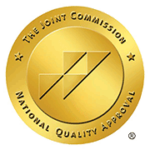Disorganized thinking characterizes a thought disorder, appearing as abnormal language expression in speech and writing. Individuals affected by a thought disorder often struggle to construct coherent sentences, leading to fragmented or jumbled communication. This symptom is not confined to any single diagnosis and can manifest in various psychiatric disorders, such as schizophrenia.
The way an individual organizes and articulates thoughts often identifies thought disorders. Disruptions in thought processes hinder the person’s ability to engage in logical discourse and may appear as tangential speech patterns, illogical reasoning, or the use of neologisms—words with meaning only to the speaker. Disturbances in thought can significantly impact social interactions and contribute to challenges in personal and professional relationships.
Recognizing the broader implications of language and communication is essential in understanding thought disorders. Treatments, typically centered on therapies aimed at improving cognitive function and managing underlying conditions, are available. With proper management, individuals with thought disorders can enhance their communication skills and overall quality of life.
Defining Thought Disorders
Thought disorders encompass a range of mental health conditions characterized by disorganized thinking and communication difficulties. These disorders can significantly impact an individual’s ability to express and process thoughts effectively.
Classification of Thought Disorders
Thought disorders are primarily identified through their impact on the flow and organization of thought. They are often associated with several psychiatric conditions, including but not limited to:
- Schizophrenia: Disorganized thinking is a hallmark symptom.
- Mood Disorders: Some forms, like bipolar disorder, can manifest disorganized thoughts during manic or depressive episodes.
- Neurodevelopmental Disorders: Conditions like autism spectrum disorder can include atypical thought patterns.
The diagnostic process typically involves identifying the specific thought disorder traits that correspond with underlying mental health conditions, as informed by resources such as the DSM-5.
Key Characteristics
The primary features that signify a thought disorder include:
- Disorganized Speech: This might involve frequent derailment of ideas or incoherence in speech patterns. A person might speak tangentially or display loosely associated thoughts.
- Difficulty with Thought Content: Individuals may express unusual beliefs or have difficulty staying on topic during conversations.
- Formal Thought Disorder: Also known as disorganized speech, it is marked by disruption to the structure or form of thought, leading to impaired communication ability.
Clinical assessments can help to clarify the presence and extent of these symptoms. For more detailed information, medical sources like Healthline and Verywell Mind provide insights into the intricacies of thought disorders.
Symptoms of Thought Disorders
Thought disorders present through a variety of symptoms impacting language and thought processes. Individuals with these disorders may exhibit easily recognizable disruptions in their communication patterns.
Disorganized Thinking
In thought disorders, disorganized thinking manifests as difficulty in organizing thoughts logically. Individuals might struggle to stay on topic or display a coherent train of thought, making it challenging for them to participate in conversations effectively.
Loose Associations
One of the hallmarks of thought disorders is loose associations, also known as derailment. Here, individuals shift between topics with no apparent logical connection. This pattern results in a disjointed and often confusing dialogue.
Neologisms
Individuals experiencing neologisms create new words or expressions that are unique to them and may not be understood by others. These individuals typically assign specific meanings to the invented words, but they lack clear communication value in a broader context.
Causes and Risk Factors
Understanding the causes and risk factors of thought disorders is essential for forming a comprehensive approach to treatment for these complex conditions.
Biological Factors
Biological factors that may contribute to the development of thought disorders include genetic predispositions and neurobiological abnormalities. Relatives of individuals with schizophrenia or related thought disorders have an increased genetic risk of developing similar conditions.
Research suggests that irregularities in brain structures, neurotransmitter systems, and neural circuits also play a role in the manifestation of disorganized thought processes.
Environmental Influences
Environmental factors such as prenatal stressors, psychosocial stress, and substance use can also play a significant role in precipitating thought disorders. Exposure to toxins or infections during the prenatal stage may increase the risk, as can traumatic life events or persistent stress. Substance use, particularly of hallucinogens or cannabis, has been linked with thought disorders, potentially triggering symptoms in vulnerable individuals.
Diagnosis
Mental health professionals primarily diagnose thought disorders through a comprehensive clinical assessment, which may include a mental status examination and analysis of speech patterns.
Clinical Assessment
Clinicians diagnose thought disorders through thorough consultations, evaluating the patient’s speech and thought processes. They scrutinize key aspects such as coherence, relevance, and organization of thoughts. Psychologists and psychiatrists may administer structured interviews to gauge the severity and pattern of thought disorganization. Additionally, psychological testing can help identify the presence of thought disorders.
Differential Diagnosis
Clinicians play a crucial role in distinguishing thought disorders from other mental health conditions through proper diagnosis. They must rule out similar symptoms that could be attributed to mood disorders, psychosis, or neurocognitive disorders. A differential diagnosis involves reviewing medical history, conducting physical examinations, and potentially performing neuroimaging or laboratory tests to exclude neurological conditions or the effects of substances that could mimic the symptoms of a thought disorder.
Treatment Options
Effective management of thought disorders involves a combination of pharmacological approaches psychotherapy and counseling.
The ultimate goal of each treatment plan is to tailor it to the individual’s specific needs and to improve thought processes and communication.
Pharmacological Approaches
Antipsychotic medications, which influence neurotransmitter activity in the brain, are often a cornerstone in treating thought disorders, particularly when they’re linked to conditions like schizophrenia.
Commonly prescribed medications for thought disorders include:
- Typical Antipsychotics: Such as haloperidol and chlorpromazine
- Atypical Antipsychotics: Including risperidone, olanzapine, and clozapine
Healthcare providers carefully monitor these medications due to their potential side effects.
Psychotherapy and Counseling
Psychotherapy plays a critical role, often in conjunction with medication. It helps patients develop skills to manage their symptoms and improve communication.
Two effective modalities include:
- Cognitive Behavioral Therapy (CBT): Assists individuals in recognizing and changing distorted thinking patterns.
- Social Skills Training: Focuses on improving social interactions and language use.
Therapists may work individually or in group settings to provide support and teach coping strategies.
Managing Thought Disorders
Individuals with thought disorders effectively manage their conditions by employing a combination of coping strategies and building robust support networks. These approaches aim to help them navigate the complexities of their conditions and enhance their quality of life.
Coping Strategies
- Medication Compliance: Individuals should adhere to their prescribed medication regimen to manage symptoms effectively. They need to understand their medications, including how they work and potential side effects.
- Therapeutic Techniques: Engaging in therapeutic activities such as cognitive-behavioral therapy can help patients recognize and adjust their thought patterns. For structured speech and thinking, techniques such as speech therapy may be recommended.
- Routine Structure: Creating a daily schedule assists in providing a sense of order and predictability, thus reducing stress and disorganized thoughts.
- Mindfulness and Relaxation: Practices like mindfulness and relaxation exercises can decrease anxiety, which may exacerbate thought disorder symptoms.
Support Networks
- Family and Friends: A strong network of family and friends can provide the necessary emotional support. Education about thought disorders helps them understand the challenges faced and how to offer appropriate support.
- Peer Support Groups: Participation in support groups allows individuals to share experiences and coping strategies. These groups provide a sense of community and reduce feelings of isolation associated with thought disorders.
- Mental Health Professionals: Regular interaction with mental health professionals ensures ongoing assessment and adjustment of treatment plans. They are key in providing support and guidance for managing the disorder.
Research and Developments
Researchers are advancing the field of thought disorder research, focusing on unraveling the intricate aspects of the condition and seeking effective treatment modalities. Studies are gaining momentum in understanding the multifaceted nature of thought disorders and their manifestation, especially in schizophrenia.
Current Studies
Recent research endeavors have primarily concentrated on examining the phenomenology and neurobiology of thought disorders. An example is the comprehensive analysis featured in “Rethinking Thought Disorder,” which elaborates on the peculiarities in thinking, language, and communication that define the condition. Current studies aim to dissect the cognitive processes underlying thought disorders, employing sophisticated methodologies such as neuroimaging and machine learning in their research. Participants’ linguistic patterns and brain activity are scrutinized to identify potential biomarkers.
- Objective Measures: Emphasis on creating standardized assessments.
- Genetic Links: Exploration of hereditary patterns influencing the condition.
Potential Future Therapies
Advancements in understanding thought disorders open the door for novel therapeutic approaches. The insights gained from studies such as “Thought Disorder as a Neglected Dimension in Schizophrenia” suggest that interventions may be personalized based on the patient’s specific cognitive and schizophrenic profile.
The future of therapy may involve:
- Targeted Cognitive Behavioral Therapy (CBT): Tailored to address the unique thought processes in thought disorders.
- Pharmacological Interventions: Development of medications aimed at the precise neurochemical pathways involved.
- Neuromodulation Techniques: Use of non-invasive brain stimulation to rectify abnormal neural activity.
Researchers remain hopeful that these prospective treatments could vastly improve the quality of life and functional outcomes for those affected by thought disorders.
Conclusion
Disorganized thinking characterizes thought disorder, manifesting as abnormal expression in speech and writing. While often associated with schizophrenia, it can also appear in other mental health disorders. The disruption to the flow and organization of thoughts is the primary feature of a thought disorder.
Effective management and treatment are crucial. They may include medication, therapy, and psychosocial interventions. The goals are to improve thought coherence and alleviate any associated symptoms. With appropriate interventions, individuals can experience significant improvements in their communication and overall quality of life.
Mental health professionals recognize and understand the nature of thought disorders, enabling them to provide tailored treatment plans. As research progresses, further insights into the causes and treatments of thought disorders will continue to enhance the support and care for those affected.







